Digital Camera World Verdict
The Nikon Z 58mm f/0.95 NOCT is a big lens - but is not nearly as big as we had imagined, or as heavy. Even on the small Nikon Z50 it feels something that is actually usable. Used at f/0.95, the limited depth of field is incredible. With portraits you can get the eyelashes pinsharp, but leave the eyes noticeably blurred. In the right hands, and with care, this gives you an incredibly creative too. Beautiful out-of-focus circular highlights, like full moons, appeared behind the model - which portrait photographers and cinematographers will be dying to use. It is expensive - but for most pros, this is a lens that will be hired for a shoot, and as such it will be a lens that will undoubtedly always be on back order.
Pros
- +
Incredible f/0.95 maximum aperture
- +
LED info panel
- +
Super long-travel manual focus ring
Cons
- -
Delicate construction and size means it comes in its own custom flight case
- -
The price
- -
Limited depth of field will test your focus technique to the max
Why you can trust Digital Camera World
The Nikon Nikkor Z 58mm f/0.95 NOCT S was launched earlier this week at the same time as the new Nikon Z50 APS-C mirrorless camera. But sadly at the London press conferences the NOCT was nowhere to be seen... Two days later, it is one of the stars of the show of the Berlin Photo Week where we first got our hands on it. A couple of weeks later, we finally got hold of production samples where we were allowed to take images (which you can see below).
The Z 58mm f/0.95 S has always been the poster boy for the Nikon mirrorless system and for the Nikon Z lens roadmap. In many ways it has been a proof-of-concept lens that goes to prove that moving to a new wider lens mount than used in its previous DSLRs and SLR cameras over the last 60 years was worth all the effort.
It is a big lens, weighing in at around 2kg. And it is an expensive lens for what is essentially just a standard prime - costing over $8000 / £8000 when it goes on sale at the end of October. But then again, Nikon is not expecting to sell thousands of these... like other innovative lenses from its past (such as the incredible 6mm Fisheye) it is destined to become a thing of legend...
But how does it handle (and perform)...?
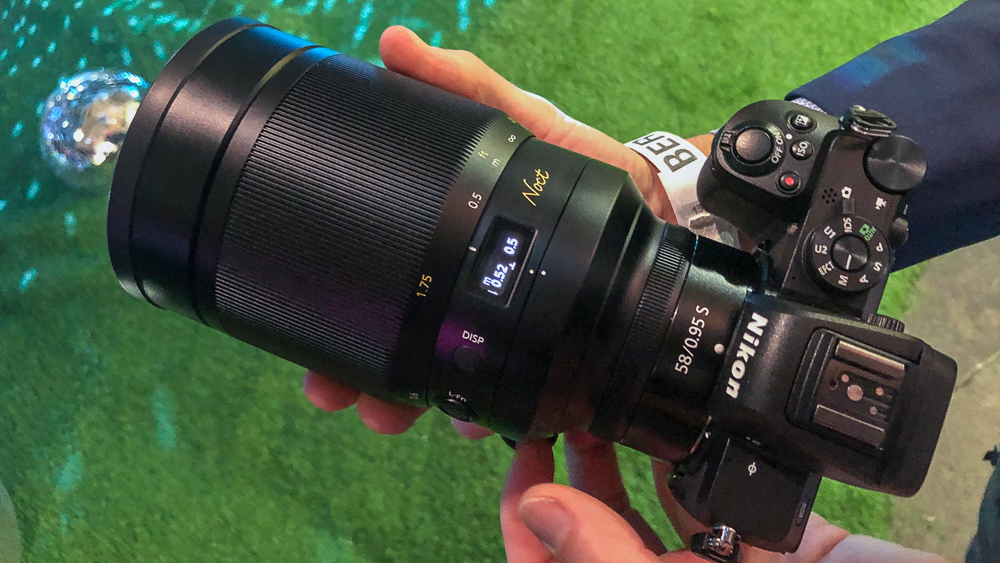
Build and handling
Even though this big lens is better designed for the bigger full-frame Nikon Z 6 and Nikon Z 7 bodies, we were actually pleasantly surprised that the 58mm Noct did not dwarf this small APS-C Z 50 mirrorless body. Like all things of legend, in our minds it had become the monster lens of our own headlines, and the reality is much more manageable than the myth. For those who have used it, this is smaller and lighter than the Nikon AF-S 200mm f/2 VR lens – although is definitely in the same ballpark of bulk. Its actual dimensions, for the record, are 153x102mm.
The lens has the LED information panel, display button and Fn function button as found on the Nikon Nikkor Z 24-70mm f/2.8 S, which we love. More lenses should have this system – it is perfect way to customize the lens to your way of working, and to show things such as focused distance in an accurate way.
A key feature of this lens is the manual focus ring.... the degree of rotation is just enormous. To move from infinity to the closest focusing distance of 0.5m, you feel like you are turning forever. In fact, the focus moves through as near 360° as is probably technically possible – and with this you get very precise focus adjustment.
You need this precision, mind you. If you use this lens at f/0.95 (and you were mad to use this lens if you weren't going to use it at maximum aperture) then the smallest change knocks your subject very noticeably out of focus.
Performance
As well as running our full suite of lab tests (below) we were able to use this lens for a series of portrait shots, and it took some turning of the focus ring to even see the model's face in the viewfinder. At f/0.95 you need micro precision here – and focus peaking is undoubtedly something you must engage to ensure that you are getting the right area of the shot in focus.
It is also worth programming the Function button of the lens to zoom in to 100%, allowing you to be even more critical with the focusing. In the 100 or so images we shot, it proved all too easy to get the eyelashes of the model in focus, but leave the irises annoyingly blurry. Another tip for success (hat tip to Jerry Ghionis here) is to take advantage of focus assist; you may not have autofocus, but if you put the focus point over the area you want sharp, the focus target in the viewfinder will go green when sharp.
But even so, for portrait photographers (for which this lens is definitely aimed at) a tripod will become something of a necessity, if not least to improve your success rate during a shoot. Filmmakers are more used to shooting everything on a sturdy support, but the large degree of focus travel means that pull focus effects will need to be chosen with care. There is no autofocus here to help you out. Fortunately you get a small, rotating, tripod collar to help you mount the lens for easy rotation and for perfect balance.
From the results, it's clear this is a lens that photographers and videographers will want – or at least want to hire for particular shoots. The out-focus highlights in the scene we were shooting appeared like giant full moons, and we can see this having appeal.
The lack of depth of field may also make the Brenizer effect, much loved by wedding photographers, unnecessary – who wants to stitch together lots of images in post, when you can shoot super-blurred backgrounds in camera?
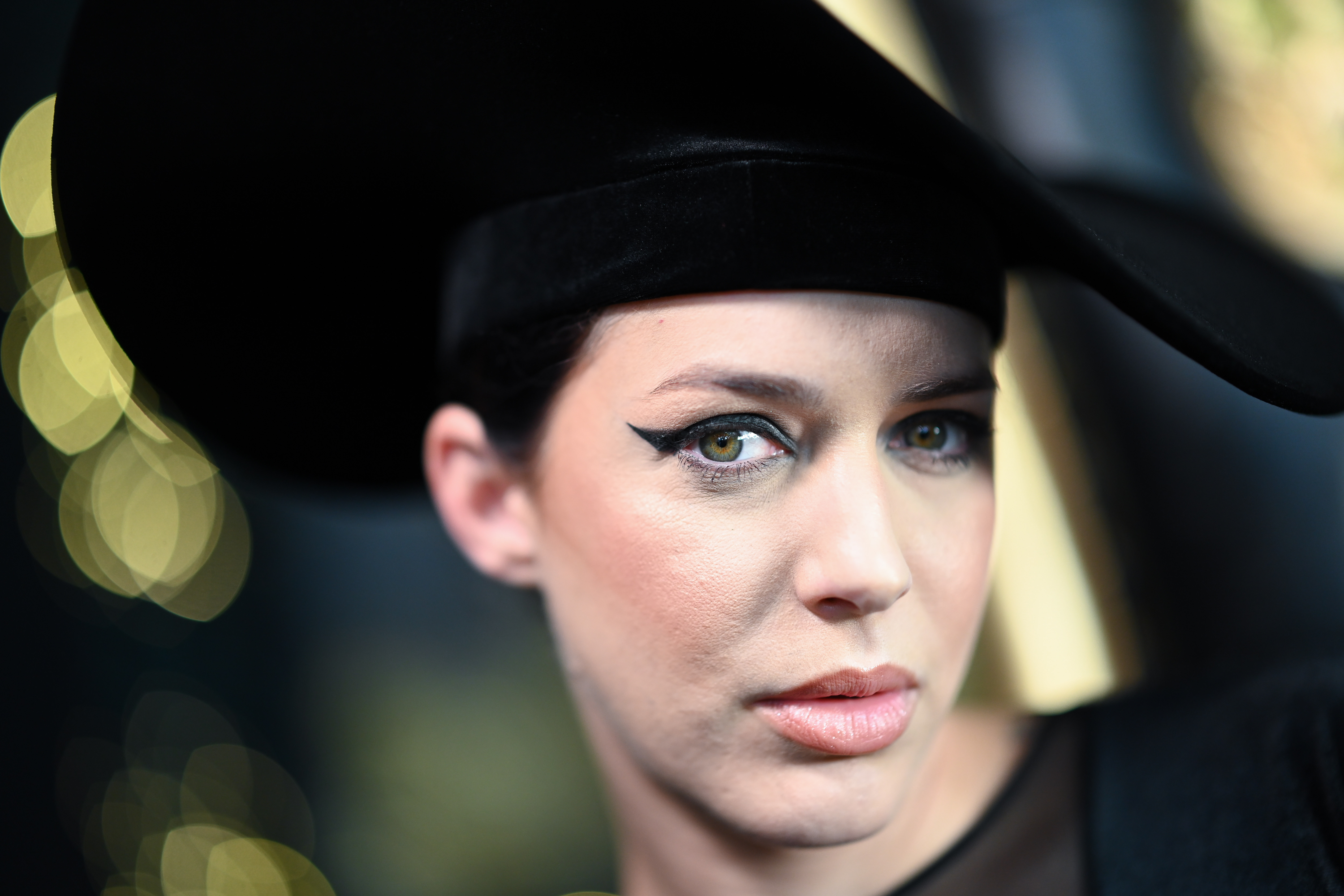
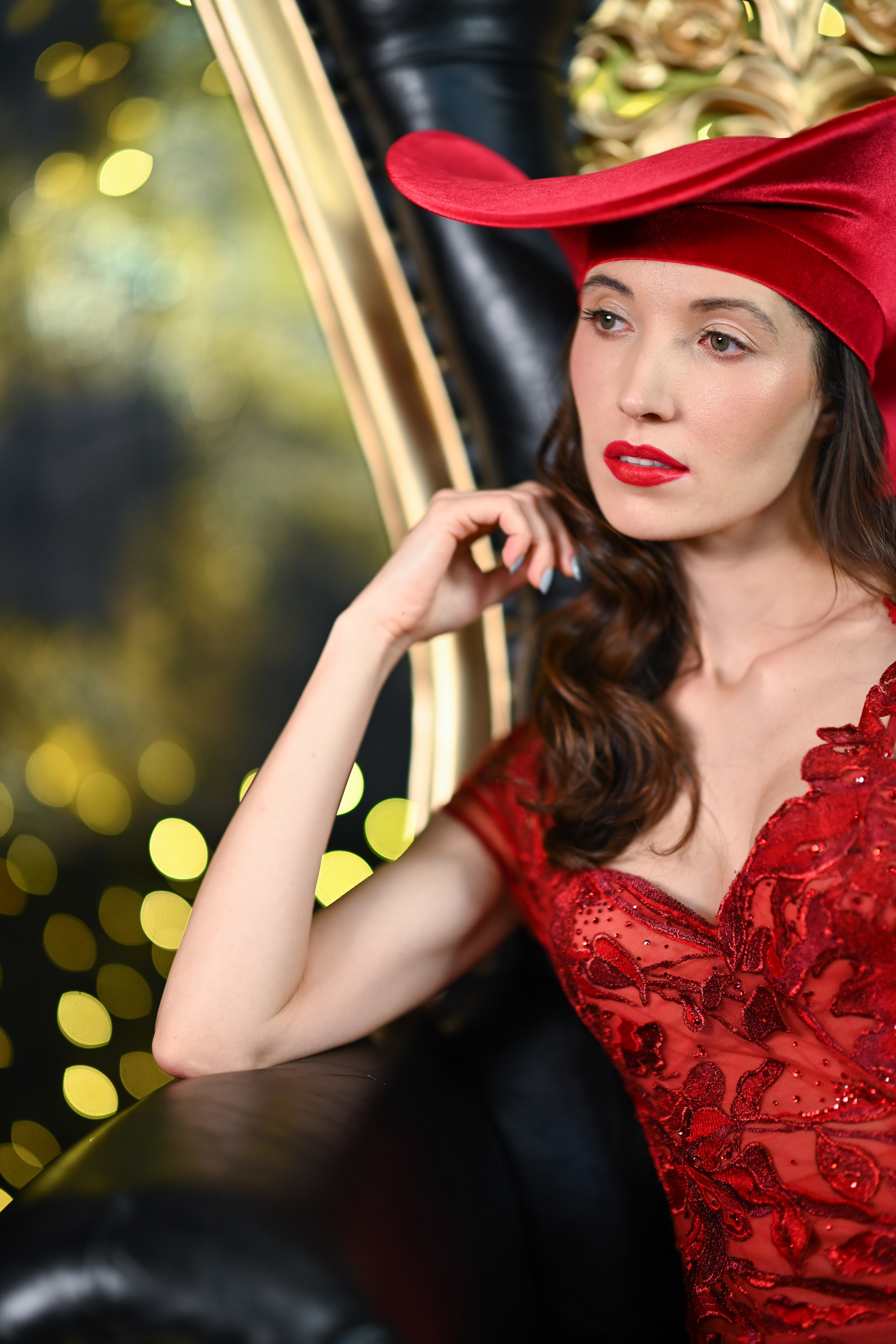
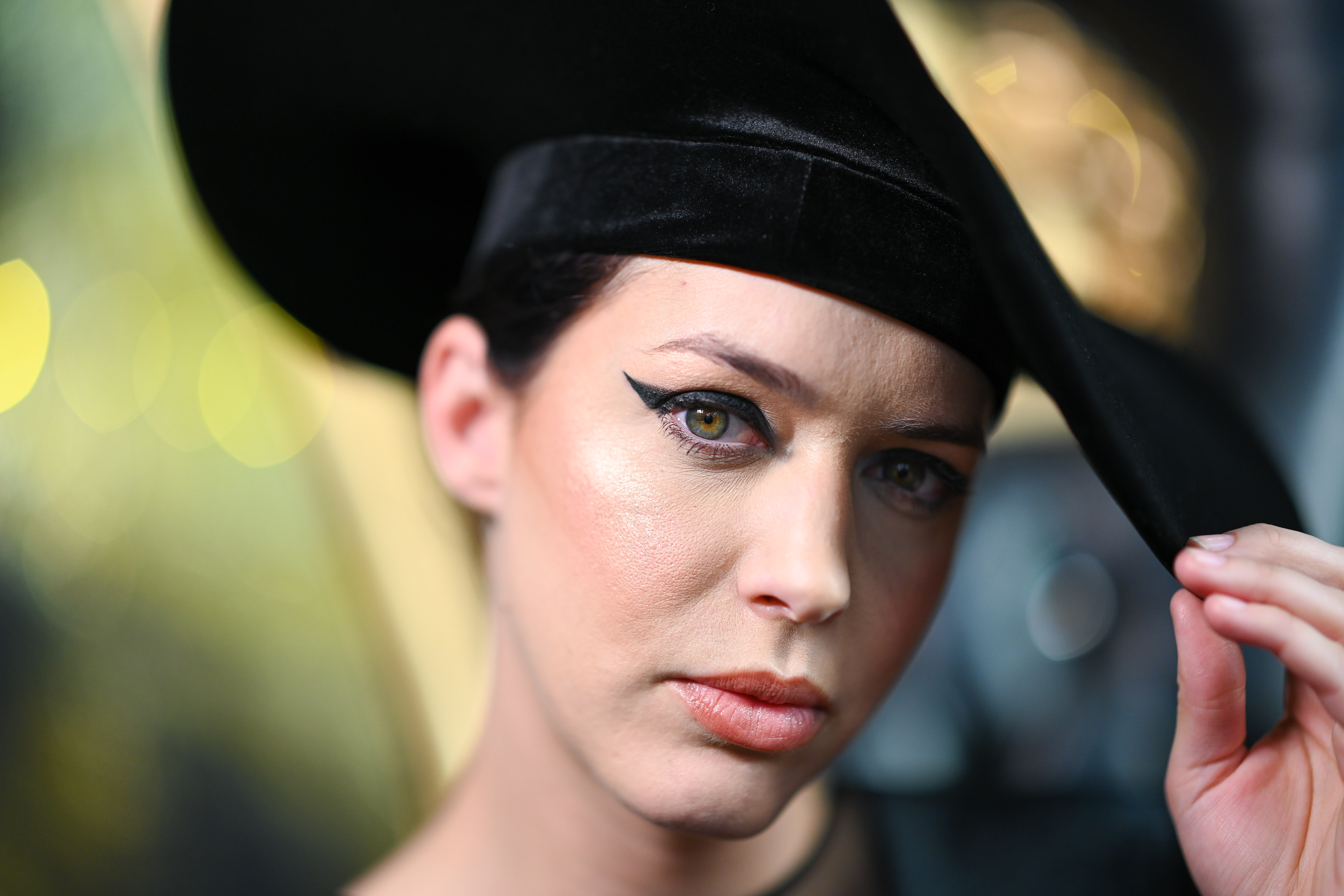
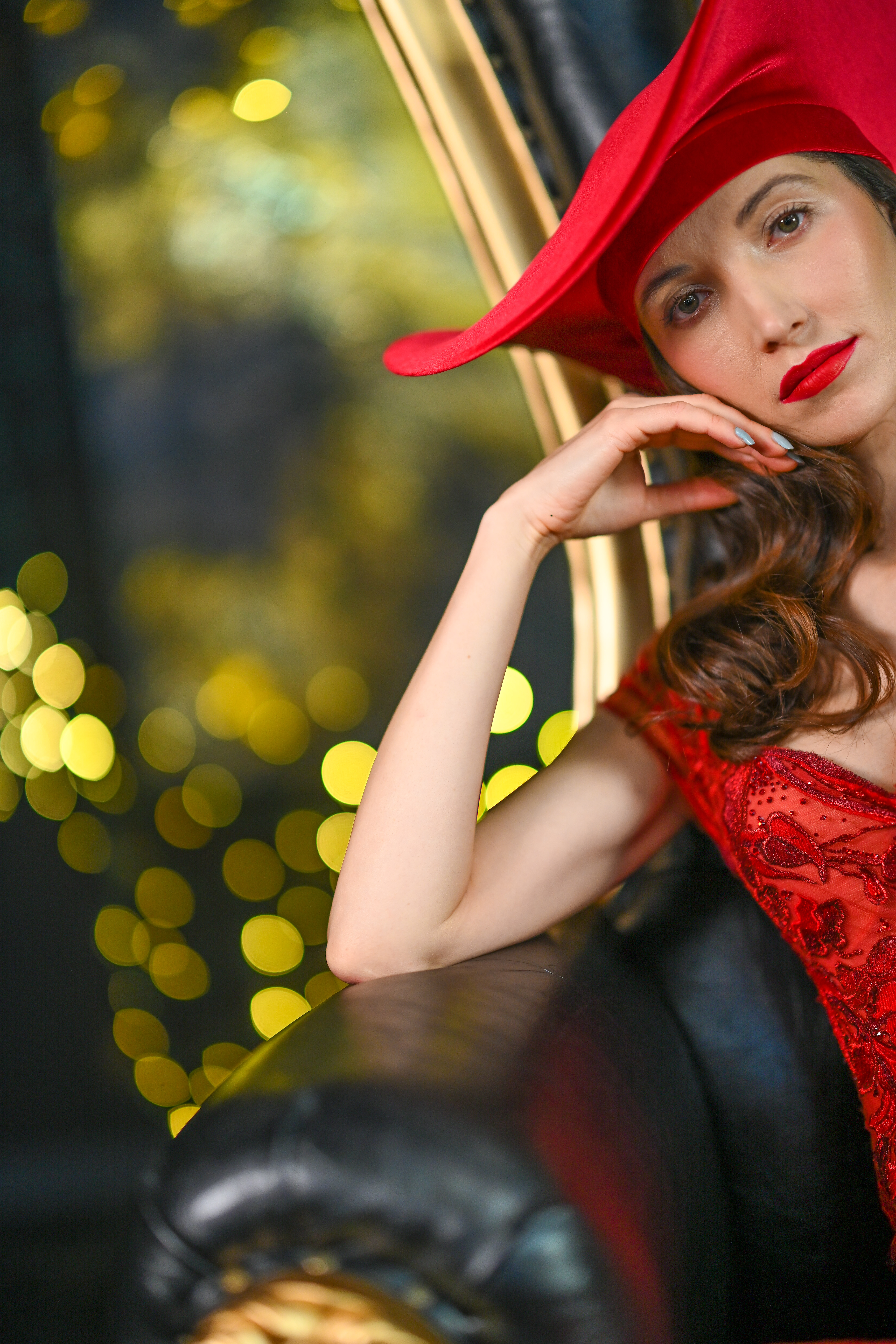
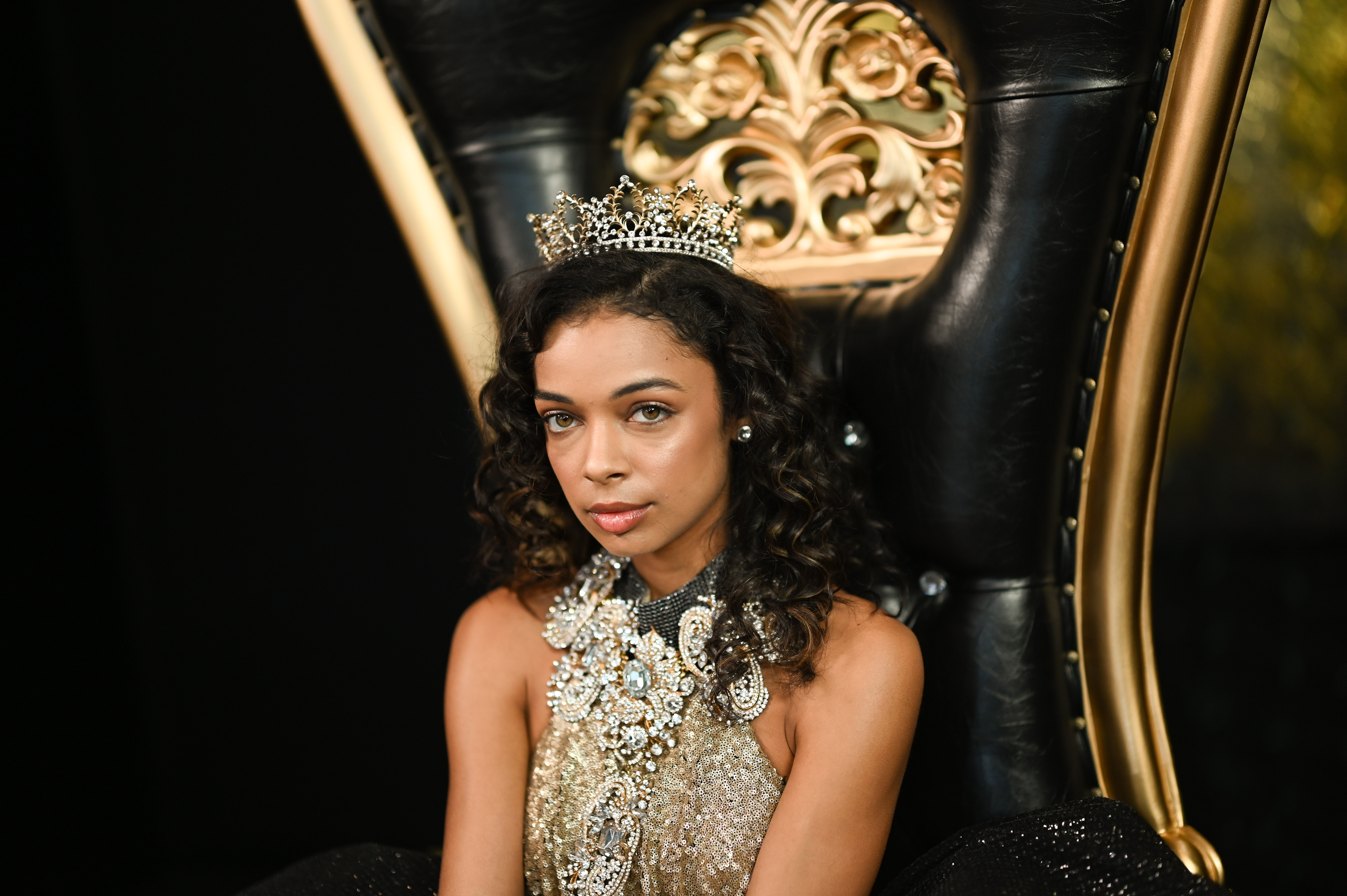
Lab tests
We run a range of lab tests under controlled conditions, using the Imatest Master testing suite. Photos of test charts are taken across the range of apertures and zooms (where available), then analyzed for sharpness, distortion and chromatic aberrations.
We use Imatest SFR (spatial frequency response) charts and analysis software to plot lens resolution at the centre of the image frame, corners and mid-point distances, across the range of aperture settings and, with zoom lenses, at four different focal lengths. The tests also measure distortion and color fringing (chromatic aberration).
Sharpness
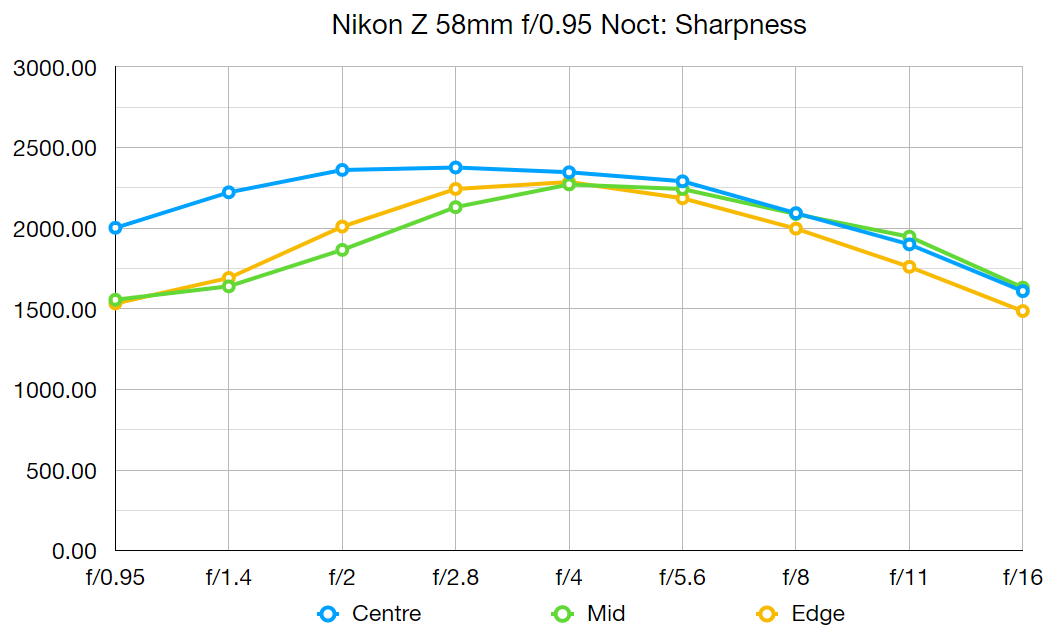
This test measures lens sharpness in terms of line widths per picture height. Any score exceeding 2000 lw/ph is considered excellent. Here we can see that the Nikkor 58mm f/0.95 is very sharp in the centre of frame right throughout its aperture range, and even wide open at f/0.95. Mid and corner-frame sharpness is also respectable wide open, and manages to almost equal the centre-frame sharpness at f/2.8 and beyond – that's a rare feat for any lens.
However, it's worth noting that the Nikkor 58mm Noct is by no means sharper than other, 'lesser' Nikkor Z-mount lenses. In our testing, the Z 24mm f/1.8 S – a lens costing 10% that of a Noct – achieves slightly higher centre sharpness results, and that's using the same Z 6 test body.
Fringing (lower scores are better)
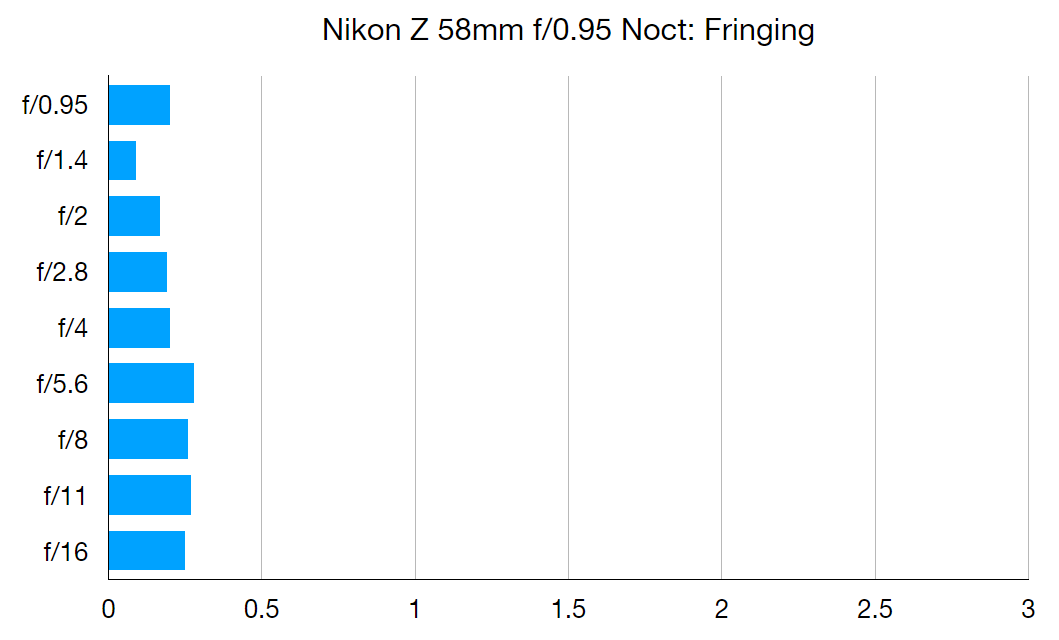
We measure fringing at the edges of frame, where it's likely to be most apparent. Even then, the Nikkor 58mm Noct produces virtually no fringing at any aperture. These results are about as good as you can get!
Distortion: 0.14
A figure of zero indicates a distortion-free lens. As with fringing, the Noct produces next to no distortion. We obtained this result with in-camera distortion correction disabled, so this near-perfect score is completely attributable to Nikon's optical engineering.
Verdict
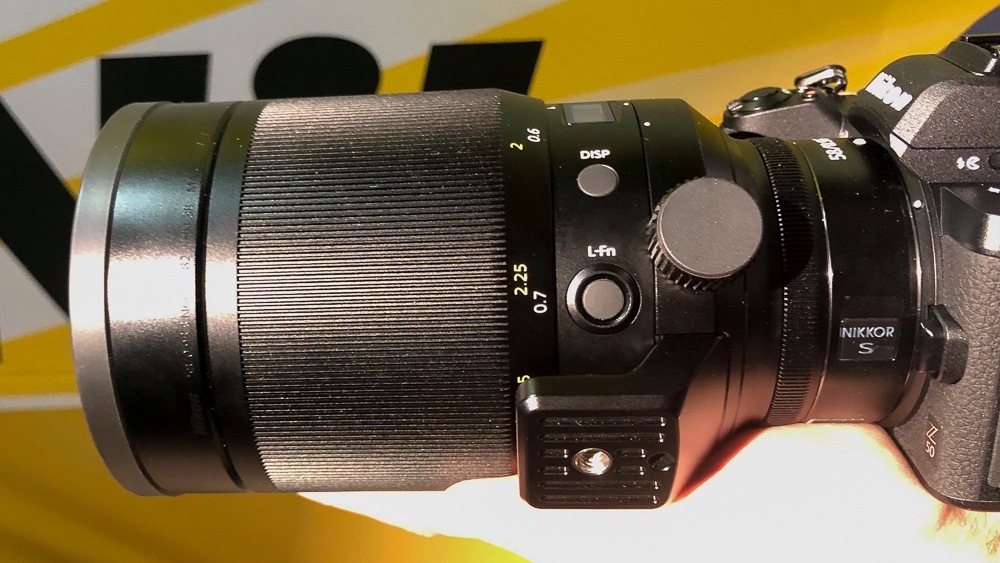
The Nikon Z 58mm f/0.95 NOCT is a big lens, but is not nearly as big as we had imagined, or as heavy. Even on the small Nikon Z 50 it feels something that is actually usable. What's obvious is the incredible limited depth of field that the f/0.95 maximum aperture creates. Beautiful out-of-focus circular highlights, like full moons, appeared behind the model in our test session, an effect which portrait photographers and cinematographers will be dying to use. The Noct is expensive, but for many pros, this is probably a lens that will be hired for a shoot, and as such it will be a lens that will undoubtedly always be on back order.
Read more
• Nikon Z lens roadmap
• Nikon mirrorless cameras and lenses
• Nikon camera rumors
• The best Nikon cameras
• These are the best mirrorless cameras
• Nikon Z7 review
• Nikon Z6 review
• Nikon Z7 II review
• Nikon Z6 II review
Chris George has worked on Digital Camera World since its launch in 2017. He has been writing about photography, mobile phones, video making and technology for over 30 years – and has edited numerous magazines including PhotoPlus, N-Photo, Digital Camera, Video Camera, and Professional Photography.
His first serious camera was the iconic Olympus OM10, with which he won the title of Young Photographer of the Year - long before the advent of autofocus and memory cards. Today he uses a Nikon D800, a Fujifilm X-T1, a Sony A7, and his iPhone 15 Pro Max.
He has written about technology for countless publications and websites including The Sunday Times Magazine, The Daily Telegraph, Dorling Kindersley, What Cellphone, T3 and Techradar.


